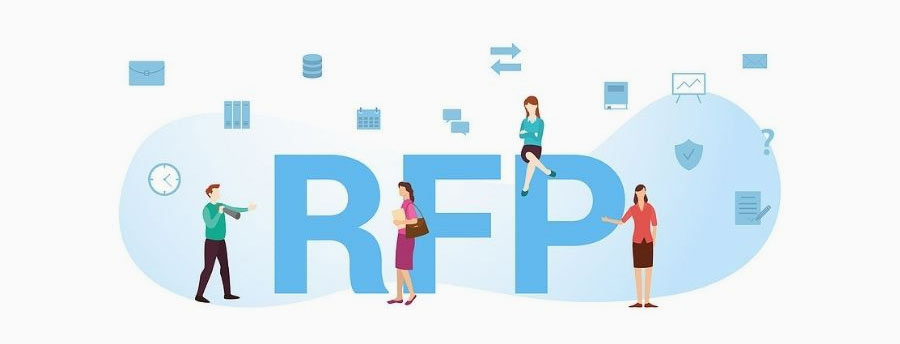Sending an email feels so easy, that we often don’t give the wording a whole lot of thought.
We’ve already covered the best email greetings to clients and customers. But your messages to your clients are probably a little different from those to your colleagues, partners, or even your boss. There’s a bit more nuance, pitfalls to avoid, and personal tastes that make these email greetings potentially more complicated.
Why email greetings are important
Your email greeting can have more of an impact than the body of your email. Like the subject line, it’s the first, and possibly only part of an email that your recipient will read. What you say and how you say it will impact the recipient’s perception of you. It will set the tone for the remainder of the email and can impact whether someone reads or opens the email.
However, from my own experience and from speaking to my colleagues at Palo Alto Software, I’ve found that it matters less about who you’re speaking to. Instead, it’s more about the culture at play within your organization—and the culture you hope to foster overall.
How to choose the right email greeting
If you’re trying to navigate a new work environment or trying to establish communication standards for your business, here are a few questions you should ask.
1. What’s your connection?
Your relationship with our coworkers and colleagues is going to vary a lot depending on how closely you work, your roles, and your overall rapport. No matter how much you attempt to standardize it, the reality is that not every greeting applies to everyone.
Jonathan Michael, our Outpost marketing manager here at Palo Alto Software, had an interesting take:
He suggests thinking of your colleagues as existing in “concentric circles.” The inner circle is likely made up of folks you have a fairly casual, open relationship with; you might joke around and even consider them to be your friends. Beyond that, there are people within your organization or professional sphere that you still feel fairly comfortable with, but you might button things up a little—perhaps because you don’t know them as well, or you don’t work with them as often.
The outside circle is made up of colleagues that are still within your professional sphere, but perhaps are people you work with infrequently—or maybe they are your bosses, managers, or important donors, and you’d rather keep the relationship as professional as possible.
“You would use a different greeting for someone in that inner circle than someone in the outer circle naturally,” says Jonathan. The same rules apply to email greetings; depending on your relationship with the person, you have room to adjust your formality.
The key here, however, is to keep an eye on their style of communication—and I’ll go over that next.
2. How do they interact via email?
“No matter which ‘circle’ someone is in, it’s also important to match formality if they make the first contact,” says Jonathan. “Even if it’s someone who’s in the desk directly next to yours, if their communication style, personality, or preference is more formal, you should probably match that when communicating with them.”
So, if Jonathan was to email me saying, “Dear Ms. Morgaine,” I’d take a cue from that and respond with “Dear Mr. Michael.”
Think of it like any active listening and mirroring you do during in-person conversations with your colleagues. If you have a boss that is all business, you can probably assume they prefer a direct email greeting, like “Dear Mr. Smith,” rather than an informal, long-winded opener.
It’s an example we’ve referenced multiple times, but it’s a good one — Noah Parsons, our COO at Palo Alto Software, is a big fan of brevity when it comes to email interaction. Generally, this means dispensing with small talk, capitalization, and lengthy emails altogether. For him, email is best when it’s efficient, to the point, and brief.
I know, then, that when I email Noah, it’s totally appropriate to open with “Hey Noah,” and dive right in, or even skip the greeting entirely and get right to the point.
So, pay attention to how your professional contacts treat email; do they use it more like text messaging, and get straight to the meat of the message? Or, do they open with “Dear [First Name],” “Good morning,” or some other traditional greeting?
Going back to the idea of mirroring, it’s been found that mirroring your conversation partner can help you connect and build a stronger rapport. So, keep in mind that this doesn’t just apply to in-person communication, and consider taking your greeting cue from your email conversation partner to help build a stronger connection overall.
3. What type of climate do you want to create?
It’s probably a given that you hope to create an environment that is positive and productive at work. But, when considering how you communicate via email, it’s a good idea to go a little deeper.
Feeling underappreciated at work is an unfortunate reality for many; a study conducted by Clear Review found that 40 percent of workers felt that employee recognition wasn’t a priority. This creates a less engaged workplace where members of a team aren’t as motivated to excel and produce their best work.
Of course, there’s a lot that goes into creating a workplace culture where everyone feels acknowledged and appreciated. This goes beyond how you greet an employee or other colleagues via email. But, it’s an important thing to keep in mind. A friendly email greeting can help make the people you work with feel appreciated and valued and will foster a more positive culture than a blunt, demanding request.
If you want to create a casual, open-door environment, using more informal, friendly greetings (“Hey [First Name]!” “How’s it going, [First Name]—I hope you had a great weekend!”) can help build a positive culture, and make your colleagues feel appreciated as actual humans—rather than just employees.
4. Internal or external?
Is the person inside your organization, or are they external—like a contractor, professional colleague who isn’t directly a part of your business, or even in a different department?
If so, it’s a good idea to open more formally. Email greetings like “Dear Mr. [Name, first or full],” “Hello [Name],” or “Good morning [Name]” fit well here. “I probably lead slightly more formal (with setup) when dealing with someone external,” says John Procopio, our marketing director at Palo Alto Software.
5. What time is it?
Are you sending the email during business hours? John suggests that it’s sometimes O.K. to send a more informal, brief email if you are touching base outside of the workday.
“I want to be more economical of characters if I’m assuming the message’s being read on one’s phone,” he says.
6. Is this the first message from this sender on this topic?
Is it the first email on a thread, or is it a reply?
If it’s the first email, a more formal opener is more appropriate. For replies, it’s fine in many cases to open with a “Hi [Name]/Hey [Name],” or dispense with the greeting. “For replies on threads, the economics of characters matter,” says John.
7. What kind of response are you seeking?
Is there an ask on your part? Are you requesting information, specific work, or similar?
If you need something, it’s polite to start your outreach with a more formal email greeting. After all, you are making a request, so it’s good form to make your contact feel respected. “If it’s an ask, I’m probably being slightly more buttoned-up,” John says.
8. Is it a novel or a tweet?
Is the email long or short? How much information are you conveying via email? Is it a one-sentence confirmation, or a long update?
“If it’s short, I’ll probably keep things brief at the top to keep things ultra-consumable,” says John. Short emails often function like text messages — so if you’re sending a “Yes, I can take care of that,” or a “Sounds good!” — type response, it’s less necessary to open with a “Dear Mr. [Name]” formal opener. A “Hey/Hi” or no greeting at all is usually fine in these instances.
Ultimately, you should treat everyone you interact with via email professionally, with respect, and in a way that you feel adequately represents your organization—because every interaction you have via email represents you and your business.
It’s not about just deferring to people in positions of power, or being overly formal for the sake of it; it’s about tailoring your greetings to the work style of those you’re emailing, the situation, and the type of culture you hope to create within your business.
4 best ways to start emails
We’ve briefly mentioned a few email greetings worth exploring, but to truly give you a starting point, here are the 4 most used greetings you can try.
1. Hi Name,
This introduction may be the best blend of formal and informal. You can think of it as the type of welcome you’d use when passing a colleague in the halls or when first meeting a new employee. It’s calm, direct, and easily sets the tone for your workspace.
2. Greetings,
If you’re a bit more jovial, ‘greetings’ is a welcome substitution. It’s a bit more personal and friendly, while still being professional enough to use when reaching out to groups of individuals.
3. Hello Name,
If you need to be a bit more formal than ‘hi’ this is your best alternative. It’s still friendly and brief, but a bit more serious for emails that need that initial context.
4. Hi there,
A variation of the first option we listed, this is perfect to use when you are sending out mass emails or addressing someone you don’t know personally. It’s also a simple way to send notes to colleagues you know really well and helps avoid more traditional greetings.
Treat all professional colleagues with equal courtesy
It’s tempting to create different rules around email greetings for a boss or investor versus one of your employees.
The impulse makes sense—it’s natural to assume you should defer and act a bit more formally with someone who is in a “higher” position. However, doing so might mean that you fall into the trap of being overly polite to those in higher roles, and making your employees or colleagues feel a bit dismissed.
John, emphasizes the importance of treating everyone you interact with professionally with an equal level of courtesy and care.
He says when writing an email that he’s more aware of other considerations than the position of the person he’s communicating with. “I actually don’t consider the level of a person’s position as relevant,” he says. “After all, I want everyone to feel the same.”
Keep that in mind when developing your own email greetings and consider the broader contextual questions we covered earlier, over someone’s position. It may take a bit of time to feel out what works for you and your team, but just like customer communications, it is well worth the effort.






